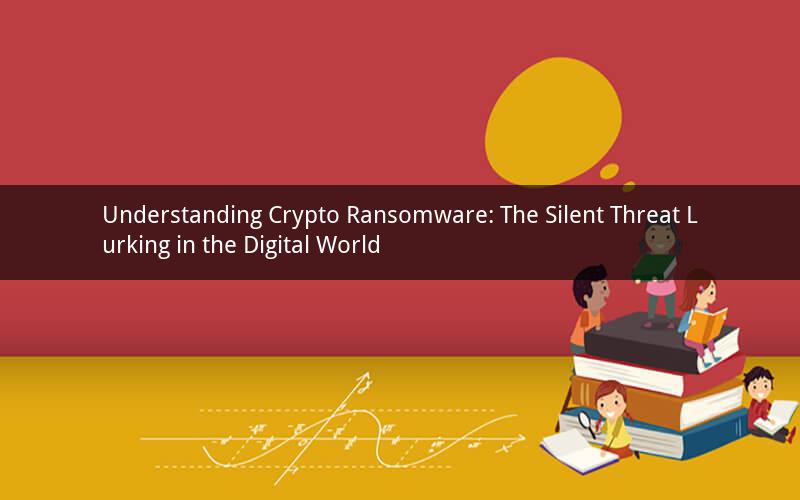
Introduction:
In recent years, the digital landscape has been fraught with various cyber threats, and one such threat that has garnered significant attention is crypto ransomware. This form of malware has the potential to lock users out of their own data, demanding a ransom in exchange for its release. This article delves into the intricacies of crypto ransomware, exploring its definition, impact, prevention strategies, and the legal implications surrounding it.
Definition:
Crypto ransomware is a type of malware that encrypts a victim's files, rendering them inaccessible until a ransom is paid. The term "crypto" refers to the use of cryptographic algorithms to encrypt the files, making them indecipherable without the decryption key. The ransomware typically spreads through malicious email attachments, infected websites, or compromised software.
Impact:
The impact of crypto ransomware can be devastating. Individuals, businesses, and even governments have fallen victim to this cyber threat, facing the loss of valuable data, financial losses, and reputational damage. The encrypted files can include personal documents, financial records, and even entire databases, causing significant disruptions to daily operations.
Prevention Strategies:
To mitigate the risks associated with crypto ransomware, several prevention strategies can be implemented:
1. Regularly Backup Your Data: One of the most effective ways to combat ransomware is to maintain regular backups of your data. This ensures that you can restore your files in the event of an attack.
2. Exercise Caution with Email Attachments: Be cautious when opening email attachments, especially if they are from unknown or suspicious sources. Use email filtering tools to block malicious attachments.
3. Keep Software Updated: Regularly update your operating system, antivirus software, and other applications to ensure that you have the latest security patches.
4. Educate Employees: Train employees on recognizing phishing attempts and suspicious emails. This can help prevent the spread of ransomware within an organization.
5. Use Strong Passwords: Implement strong, unique passwords for all accounts to reduce the risk of unauthorized access.
Legal Implications:
The legal implications of crypto ransomware can vary depending on the jurisdiction. In some cases, paying the ransom may be considered a crime, as it involves funding criminal activities. Additionally, law enforcement agencies may investigate ransomware attacks and pursue legal action against individuals or organizations involved in the distribution or payment of ransomware.
Questions and Answers:
1. Q: How does crypto ransomware spread?
A: Crypto ransomware can spread through various means, including malicious email attachments, infected websites, or compromised software. Cybercriminals often use phishing techniques to trick users into opening malicious links or attachments.
2. Q: Can crypto ransomware be removed from an infected system?
A: Removing crypto ransomware from an infected system is not always possible. The primary goal of ransomware is to encrypt files, and decryption may not be feasible without the decryption key. However, it is crucial to seek professional assistance from cybersecurity experts to assess the situation and determine the best course of action.
3. Q: Is it legal to pay the ransom in exchange for the decryption key?
A: The legality of paying the ransom varies depending on the jurisdiction. In some cases, paying the ransom may be considered a crime, as it involves funding criminal activities. It is advisable to consult with legal professionals before considering any actions related to ransomware payments.
4. Q: Can ransomware attacks be prevented entirely?
A: While it is challenging to prevent ransomware attacks entirely, implementing robust cybersecurity measures and educating users on safe online practices can significantly reduce the risk of falling victim to such attacks.
5. Q: What should I do if I suspect my system has been infected with ransomware?
A: If you suspect your system has been infected with ransomware, it is crucial to disconnect from the internet immediately to prevent the spread of the malware. Then, seek professional assistance from cybersecurity experts to assess the situation and determine the best course of action. Do not pay the ransom without consulting legal professionals.
Conclusion:
Crypto ransomware is a significant threat in the digital world, capable of causing severe disruptions and financial losses. By understanding its definition, impact, prevention strategies, and legal implications, individuals and organizations can take proactive measures to safeguard their data and minimize the risks associated with this cyber threat.